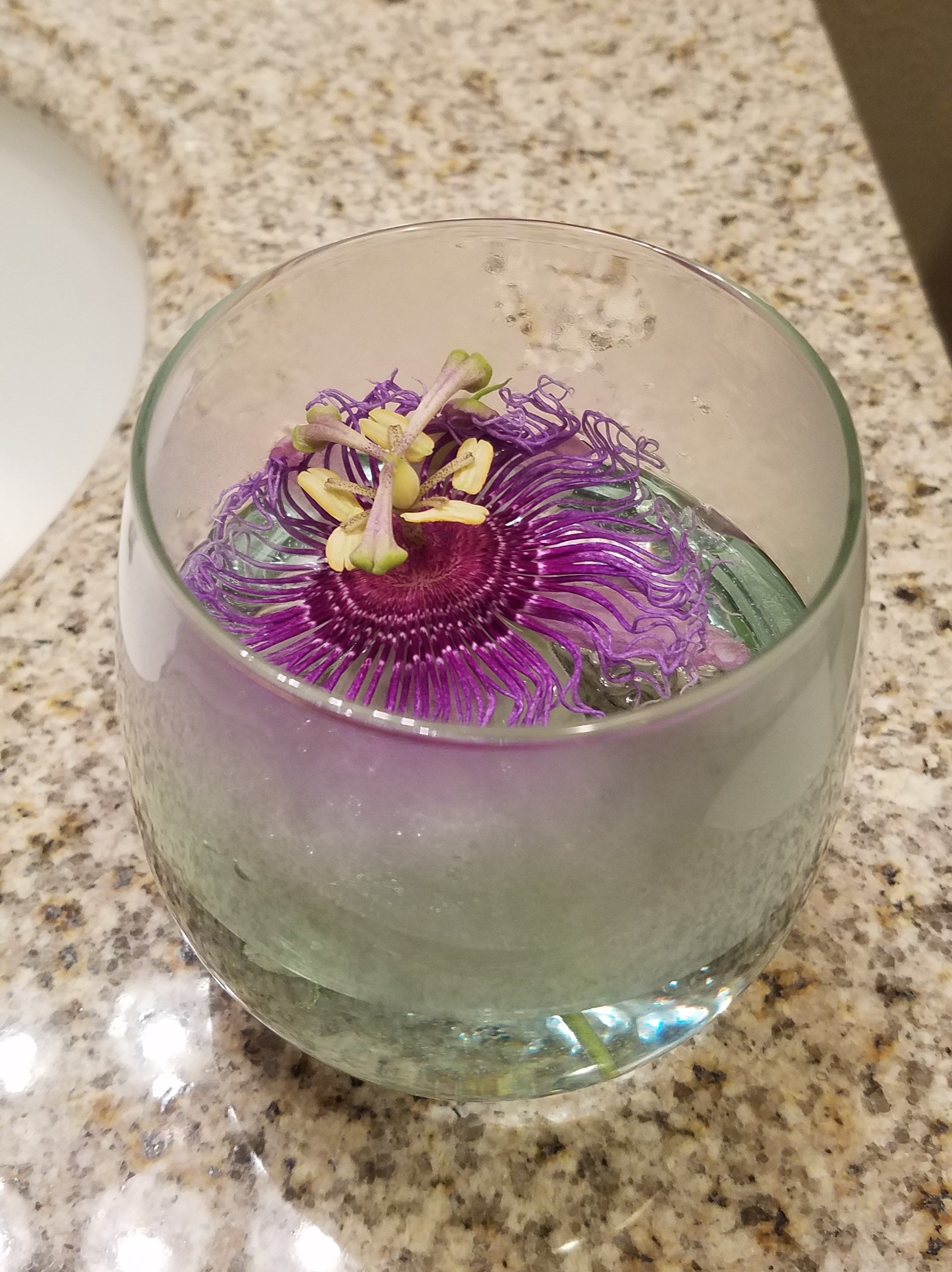|
Ooencyrtus Marcelloi
''Ooencyrtus marcelloi'' is a parasitic wasp belonging to the family Encyrtidae. The species was first discovered in 2008 in a tropical lowland rainforest in the Soberanía National Park around Gamboa, Panama. The scientific name was first published in 2010. Female length 0.9 mm; male length 0.7-0.8 mm. The hosts of this parasitic wasp are eggs of Heliconiini butterflies. Parasitized eggs were found on passion vines: '' Passiflora auriculata'', ''Passiflora biflora'', '' Passiflora coriacea'' and ''Passiflora vitifolia ''Passiflora vitifolia'', the perfumed passionflower, is a species of ''Passiflora'', native to southern Central America (Costa Rica, Nicaragua, Panama) and northwestern South America (Venezuela, Colombia, Ecuador, Peru). Description It is a vi ...''. From one butterfly egg, a single wasp emerges. References Encyrtidae Insects described in 2010 {{chalcidoidea-stub ... [...More Info...] [...Related Items...] OR: [Wikipedia] [Google] [Baidu] |
John Noyes (entomologist)
John Stuart Noyes (born Cardiff 1949) is a Welsh entomologist. At the age of 14 an article entitled "My Hobby has Wings" about Noyes appeared in his local newspaper, the ''Pontypridd Observer''; this 1963 article highlighted Noyes' interest in entomology at an early age. In 1967 he began studying for a degree in zoology and applied entomology at Imperial College, London where he completed his doctoral thesis on the biology of the leek moth (''Acrolepiopsis assectella''). In 1974 he was appointed as a researcher in the Chalcidoidea at the British Museum (Natural History). He was seconded to the Department of Scientific and Industrial Research in New Zealand where he conducted a survey of the Chalcidoidea of New Zealand in 1980 and 1981. He travelled widely in the course of his research into the Chalcidoidea and has published over 80 papers, with some major monographs, and described one new family, 88 new genera and 644 new species of Chalcidoidea. When he retired he was reviewing ... [...More Info...] [...Related Items...] OR: [Wikipedia] [Google] [Baidu] |
Encyrtidae
Encyrtidae is a large family of parasitic wasps, with some 3710 described species in about 455 genera. The larvae of the majority are primary parasitoids on Hemiptera, though other hosts are attacked, and details of the life history can be variable (e.g., some attack eggs, some attack larvae, others are hyperparasites, and some Encyrtidae develop as parasitoids of ticks). They are found throughout the world in virtually all habitats, and are extremely important as biological control agents. They may also present as an ecological threat to the population of some species. For example, the endangered ''Papilio homerus'' butterfly is parasitized at a rate of 77%, making them the main contributor to egg mortality in this (and other) butterfly species. Some species exhibit a remarkable developmental phenomenon called "polyembryony", in which a single egg multiplies clonally in the host and produces large numbers of identical adult wasps. Even more remarkably, some of the larvae are larg ... [...More Info...] [...Related Items...] OR: [Wikipedia] [Google] [Baidu] |
Soberanía National Park
Soberanía National Park (''Parque Nacional Soberanía'') is a national park in Panama near the banks of the Panama Canal in the provinces of Panamá and Colón, some from Panama City. The Chagres River runs through the park. Established as a national park in 1980, the park covers . Visitors to the Soberanía National Park can also explore the Las Cruces Trail (Camino de Cruces). This historical trail dates back to the 16th century and was used by the Spanish to transport gold. Parts of the trail are still lined with old stones that once marked the trail's original path. The land that is now the Parque Municipal Summit was originally included in this park, but was turned over to Panama City in 1985. Birdwatching and fauna The park is popular with birdwatchers due to its abundance of bird species; some 525 bird species are found here. Pipeline Road extends for 17.5 km north–south through the park and passes through old-growth and secondary forest. Pipeline Road (''C ... [...More Info...] [...Related Items...] OR: [Wikipedia] [Google] [Baidu] |
Gamboa, Panama
Gamboa is a small town in corregimiento of Cristóbal in the Colón Province, Panama close to the Panama Canal and the Chagres River. It was one of a handful of permanent Canal Zone townships, built to house employees of the Panama Canal and their dependents. The name Gamboa is the name of a tree of the quince family. Gamboa is considered an attractive location for ecotourism. Location Gamboa is located on a sharp bend of the Chagres River at the point which feeds Lake Gatun. Just south of Gamboa, Lake Gatun and the Chagres meet the Culebra Cut (Gaillard Cut) where the Canal cuts through the Continental Divide. Thus, though Gamboa is closer to the Pacific side of Panama, its watershed is on the Atlantic side. A single lane iron and wood bridge that crossed the Chagres and was the only road access to Gamboa for most of its history. This bridge is still intact today, but in October 2018 a new 2-lane bridge was completed near the original site. History Gamboa wa ... [...More Info...] [...Related Items...] OR: [Wikipedia] [Google] [Baidu] |
Panama
Panama ( , ; es, link=no, Panamá ), officially the Republic of Panama ( es, República de Panamá), is a transcontinental country spanning the southern part of North America and the northern part of South America. It is bordered by Costa Rica to the west, Colombia to the southeast, the Caribbean Sea to the north, and the Pacific Ocean to the south. Its capital and largest city is Panama City, whose metropolitan area is home to nearly half the country's million people. Panama was inhabited by indigenous tribes before Spanish colonists arrived in the 16th century. It broke away from Spain in 1821 and joined the Republic of Gran Colombia, a union of Nueva Granada, Ecuador, and Venezuela. After Gran Colombia dissolved in 1831, Panama and Nueva Granada eventually became the Republic of Colombia. With the backing of the United States, Panama seceded from Colombia in 1903, allowing the construction of the Panama Canal to be completed by the United States Army Corps of En ... [...More Info...] [...Related Items...] OR: [Wikipedia] [Google] [Baidu] |
Heliconiini
Heliconiini is a tribe of butterflies in the subfamily Heliconiinae, also known as the passion-vine butterflies. This group has roughly 100 species and subspecies distributed primarily in the Neotropics. at Markku Savela's ''Lepidoptera and Some Other Life Forms'' Genera and select species *'' Agraulis'' (Boisduval & Le Conte, 1833) **'''' (Linnaeus, 1758) – Gul ...[...More Info...] [...Related Items...] OR: [Wikipedia] [Google] [Baidu] |
Passiflora
''Passiflora'', known also as the passion flowers or passion vines, is a genus of about 550 species of flowering plants, the type genus of the family Passifloraceae. They are mostly tendril-bearing vines, with some being shrubs or trees. They can be woody or herbaceous. Passion flowers produce regular and usually showy flowers with a distinctive corona. There can be as many as eight coronal series, as in the case of ''P. xiikzodz''. The flower is pentamerous and ripens into an indehiscent fruit with numerous seeds. List of species Distribution ''Passiflora'' has a largely neotropic distribution, unlike other genera in the family Passifloraceae, which includes more Old World species (such as the genus ''Adenia''). The vast majority of ''Passiflora'' are found in Mexico, Central America, the United States and South America, although there are additional representatives in Southeast Asia and Oceania. New species continue to be identified: for example, '' P. xishuangbannaensis ... [...More Info...] [...Related Items...] OR: [Wikipedia] [Google] [Baidu] |
Passiflora Auriculata
''Passiflora'', known also as the passion flowers or passion vines, is a genus of about 550 species of flowering plants, the type genus of the family Passifloraceae. They are mostly tendril-bearing vines, with some being shrubs or trees. They can be woody or herbaceous. Passion flowers produce regular and usually showy flowers with a distinctive corona. There can be as many as eight coronal series, as in the case of ''P. xiikzodz''. The flower is pentamerous and ripens into an indehiscent fruit with numerous seeds. List of species Distribution ''Passiflora'' has a largely neotropic distribution, unlike other genera in the family Passifloraceae, which includes more Old World species (such as the genus ''Adenia''). The vast majority of ''Passiflora'' are found in Mexico, Central America, the United States and South America, although there are additional representatives in Southeast Asia and Oceania. New species continue to be identified: for example, '' P. xishuangbannaensi ... [...More Info...] [...Related Items...] OR: [Wikipedia] [Google] [Baidu] |
Passiflora Biflora
''Passiflora biflora'', the twoflowered passionflower, is a vine with paired peduncles and flowers up to wide. It is native to the New World from Mexico to Colombia and Venezuela.Krings, A., and R.R. Braham. 2005. ''Guide to Tendrillate Climbers of Costa Rican Mountains''. Ames, Iowa: Blackwell Publishing. pp. 94-96. In Florida, ''P. biflora'' has been classified by the Exotic Pest Plant Council as a non-native species that has the "potential to disrupt native plant communities."Wunderlin, R.P., and B.F. Hansen. 2008. Passiflora biflora'. Atlas of Florida Vascular Plants, Institute for Systematic Botany, University of South Florida, Tampa. Accessed online: 31 March 2014. References biflora Taxa named by Jean-Baptiste Lamarck {{Passifloraceae-stub ... [...More Info...] [...Related Items...] OR: [Wikipedia] [Google] [Baidu] |
Passiflora Coriacea
''Passiflora coriacea'', commonly known as the wild sweet calabash or bat leaved passion flower, is a tropical vine with very distinct leaves in the shape of bats' wings. It also has purple oval or circle shaped fruit that are mainly ornamental. It is a fast-growing vine to several feet. Leaves are dark green and often with splotches of light-green. White-yellow flowers with the typically ornate ''Passiflora ''Passiflora'', known also as the passion flowers or passion vines, is a genus of about 550 species of flowering plants, the type genus of the family Passifloraceae. They are mostly tendril-bearing vines, with some being shrubs or trees. They ...'' appearance form when weather is warm. coriacea {{Passifloraceae-stub ... [...More Info...] [...Related Items...] OR: [Wikipedia] [Google] [Baidu] |
Passiflora Vitifolia
''Passiflora vitifolia'', the perfumed passionflower, is a species of ''Passiflora'', native to southern Central America (Costa Rica, Nicaragua, Panama) and northwestern South America (Venezuela, Colombia, Ecuador, Peru). Description It is a vine with cylindric stems covered in red-brown hairs when young. The leaves are serrate, three-lobed, up to 15 cm long and 18 cm broad. The lobed leaves' resemblance to grape leaves gives this passionflower its specific epithet, "vitifolia," meaning "grape leaves" after the Latin for grape "vitis." The flowers are bright red, up to 9 cm diameter. The fruit is a berry 5 cm long and 3 cm broad, with green flesh speckled with white, slight downy hairs, containing numerous seeds.Ulmer, Torsten and John Mochrie MacDougal, eds. (2004). "Passiflora: passionflowers of the world". Timber Press. The fruit is quite sour when it falls off the plant and can take a month to ripen to its full flavor of sour strawberries. Due to the ... [...More Info...] [...Related Items...] OR: [Wikipedia] [Google] [Baidu] |


